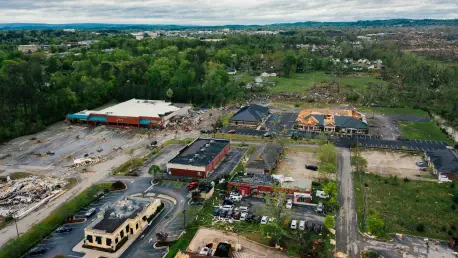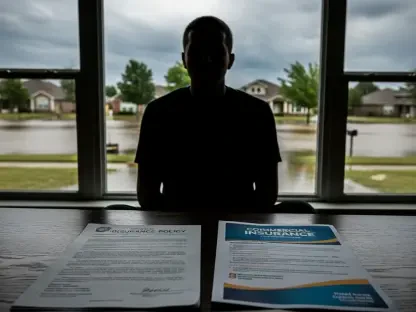In the picturesque state of Connecticut, where historic homes and coastal charm define much of the landscape, a quiet concern is brewing among homeowners and insurers alike about the future of insurance affordability. Recent data and trends suggest that while the state currently enjoys mid-range homeowners’ insurance costs compared to the national average, a surge in wind-related damage claims could signal a troubling shift. With storms becoming more frequent along the coastline and wind damage emerging as a leading cause of claims, the potential for rising premiums looms large. This issue, compounded by broader national fears of insurance becoming unaffordable, raises critical questions about how prepared Connecticut is to weather these financial storms. As climate risks intensify, understanding the dynamics of insurance costs and the specific challenges posed by wind damage is essential for homeowners looking to protect their properties without breaking the bank.
The Current State of Insurance Costs in Connecticut
Connecticut homeowners currently find themselves in a relatively favorable position when it comes to insurance premiums, with costs that fall in the middle of the national spectrum. According to recent data from the U.S. Census Bureau’s American Community Survey, annual premiums for those with a mortgage typically range between $1,500 and $1,999, while homeowners without a mortgage pay slightly less, averaging $1,000 to $1,499. This places the state on par with neighbors like Massachusetts and Rhode Island, though costs are higher than in Maine, New Hampshire, and New York, where premiums often fall below $1,500 for mortgaged owners. Compared to high-risk states like Florida and Texas, where premiums in coastal areas can soar to over $20,000 annually, Connecticut’s figures seem almost modest. However, this middle-ground status offers little comfort when considering the potential for increases driven by local risks, which could disrupt this balance and push costs closer to those seen in more vulnerable regions over time.
While the numbers paint a picture of relative stability, they mask underlying pressures that could alter the affordability landscape for Connecticut residents. A deeper look reveals that even within New England, the state’s premiums are on the higher end, signaling that there is little room for complacency. Beyond regional comparisons, the broader context of national insurance trends adds another layer of concern. With costs creeping upward across the country, the moderate rates seen in Connecticut today may not hold if external factors, such as escalating claim payouts, continue to influence the market. Homeowners in the state must also contend with the reality that insurance affordability is not just about current premiums but about how sustainable those rates will be in the face of growing environmental challenges. This intersection of regional data and national pressures underscores the need for vigilance among both residents and policymakers as they navigate an increasingly uncertain future.
Climate Risks and the Surge in Wind Damage Claims
One of the most pressing factors threatening to upend Connecticut’s insurance cost stability is the rising incidence of climate-related damage, particularly from wind events. The state may not face the extreme hurricane exposure seen in southern coastal regions, but it is far from immune to nature’s wrath. Storms along its shoreline often bring strong winds that damage roofs and lead to secondary issues like water infiltration, making wind the primary driver of insurance claims as reported by the Connecticut Insurance Department. This trend has already contributed to a significant 13.5% increase in premiums during the past year, a jump that has caught the attention of homeowners and industry watchers alike. As these claims pile up, insurers are forced to reassess risk models, often passing the financial burden onto policyholders through higher rates, which could make coverage less accessible for many in the state.
Beyond the immediate financial impact, the growing frequency of wind damage claims highlights a broader vulnerability in Connecticut’s insurance framework. Unlike flood risks, which are often mitigated through separate policies or federal programs, wind damage typically falls under standard homeowners’ insurance, placing direct pressure on insurers to adjust their pricing. The Realtor.com Climate Risk Report emphasizes that while the state’s exposure to catastrophic events is lower than in places like Florida, localized storms still pose a significant threat to property and, by extension, to premium affordability. This dynamic creates a vicious cycle: as claims rise, so do costs, potentially leading homeowners to reduce coverage or forgo it altogether, leaving them exposed to even greater risks. Addressing this challenge will require innovative solutions from both the insurance industry and state officials to ensure that protection remains within reach for all residents.
National Trends and Public Concerns Over Affordability
Across the United States, a growing sense of unease surrounds the affordability of homeowners’ insurance, and Connecticut is not entirely insulated from these national currents. The Realtor.com Insurance Affordability Report reveals that a staggering 75% of Americans fear that coverage could become prohibitively expensive, with nearly half already facing difficulties in renewing or obtaining policies. This anxiety is reshaping behaviors, as 30% of prospective homebuyers have altered their search locations to avoid high-cost insurance areas, while 58% of current homeowners nationwide admit they would consider dropping coverage if premiums climb too high. Although Connecticut’s moderate costs provide some buffer, the state’s residents are not immune to the financial strain felt elsewhere, especially as premium hikes driven by local claims begin to mirror national patterns of escalation.
This widespread concern over affordability also reflects a deeper shift in how Americans perceive the value and necessity of insurance in an era of increasing environmental risks. For many, the decision to maintain coverage is becoming a balancing act between financial constraints and the need for protection against unpredictable disasters. In Connecticut, where premiums are still manageable for most, the national trend serves as a cautionary tale of what could happen if local risks continue to drive costs upward. The fear of unaffordability is not just a distant worry but a potential reality that could influence housing decisions and economic stability in the state. Policymakers and insurers must take note of these broader sentiments, recognizing that public confidence in the insurance system is eroding and that proactive measures are needed to prevent a full-blown crisis from taking root in communities across the state.
Looking Back and Planning Ahead for Stability
Reflecting on the past year, it became evident that Connecticut faced a pivotal moment in managing homeowners’ insurance costs, as wind damage claims pushed premiums upward by 13.5% and sparked concerns about future affordability. The state’s position, once comfortably mid-range compared to national averages, showed signs of strain under the weight of climate-driven risks and national affordability fears. Homeowners and insurers alike grappled with the reality that even moderate costs could spiral if proactive steps were not taken to address the root causes of rising claims. This period highlighted the delicate balance between maintaining coverage and ensuring financial accessibility for all residents.
Moving forward, the focus should shift to actionable strategies that can mitigate the impact of wind damage and stabilize premiums over the long term. State officials could explore incentives for home fortification against storms, while insurers might develop more tailored policies that reward risk-reducing behaviors among homeowners. Collaboration between public and private sectors will be key to creating a resilient insurance market that protects Connecticut’s residents without pricing them out of coverage. By investing in prevention and innovation now, the state has an opportunity to safeguard its economic and environmental future against the unpredictable forces of nature.









